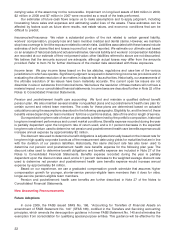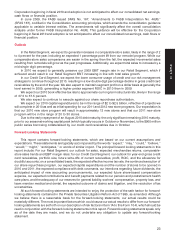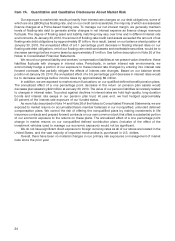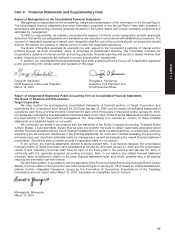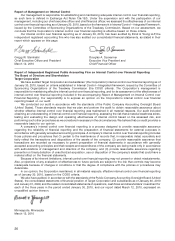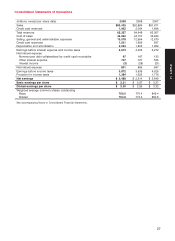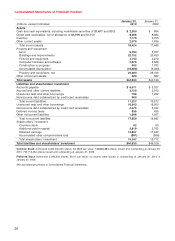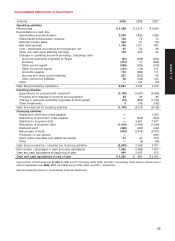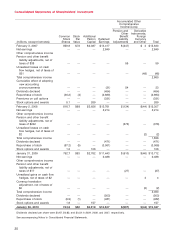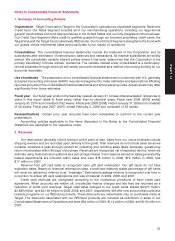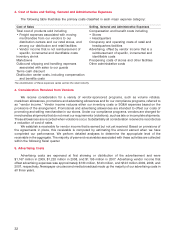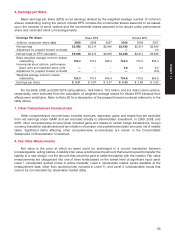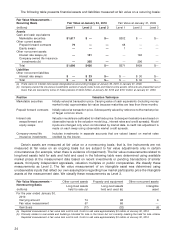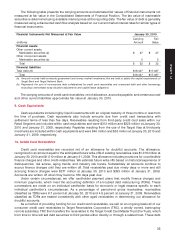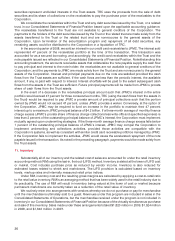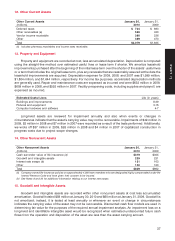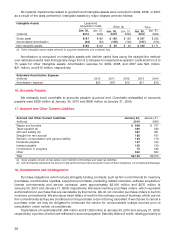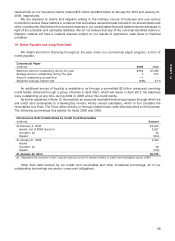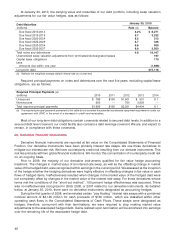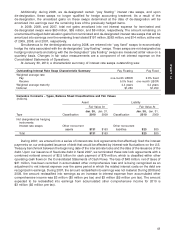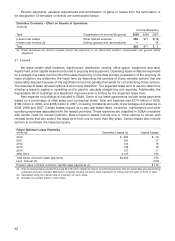Target 2009 Annual Report Download - page 53
Download and view the complete annual report
Please find page 53 of the 2009 Target annual report below. You can navigate through the pages in the report by either clicking on the pages listed below, or by using the keyword search tool below to find specific information within the annual report.
3. Cost of Sales and Selling, General and Administrative Expenses
The following table illustrates the primary costs classified in each major expense category:
Cost of Sales Selling, General and Administrative Expenses
Total cost of products sold including Compensation and benefit costs including
• Freight expenses associated with moving • Stores
merchandise from our vendors to our • Headquarters
distribution centers and our retail stores, and Occupancy and operating costs of retail and
among our distribution and retail facilities headquarters facilities
• Vendor income that is not reimbursement of Advertising, offset by vendor income that is a
specific, incremental and identifiable costs reimbursement of specific, incremental and
Inventory shrink identifiable costs
Markdowns Preopening costs of stores and other facilities
Outbound shipping and handling expenses Other administrative costs
associated with sales to our guests
Terms cash discount
Distribution center costs, including compensation
and benefits costs
The classification of these expenses varies across the retail industry.
4. Consideration Received from Vendors
We receive consideration for a variety of vendor-sponsored programs, such as volume rebates,
markdown allowances, promotions and advertising allowances and for our compliance programs, referred to
as ‘‘vendor income.’’ Vendor income reduces either our inventory costs or SG&A expenses based on the
provisions of the arrangement. Promotional and advertising allowances are intended to offset our costs of
promoting and selling merchandise in our stores. Under our compliance programs, vendors are charged for
merchandise shipments that do not meet our requirements (violations), such as late or incomplete shipments.
These allowances are recorded when violations occur. Substantially all consideration received is recorded as
a reduction of cost of sales.
We establish a receivable for vendor income that is earned but not yet received. Based on provisions of
the agreements in place, this receivable is computed by estimating the amount earned when we have
completed our performance. We perform detailed analyses to determine the appropriate level of the
receivable in the aggregate. The majority of year-end receivables associated with these activities are collected
within the following fiscal quarter.
5. Advertising Costs
Advertising costs are expensed at first showing or distribution of the advertisement and were
$1,167 million in 2009, $1,233 million in 2008, and $1,195 million in 2007. Advertising vendor income that
offset advertising expenses was approximately $130 million, $143 million, and $123 million 2009, 2008, and
2007, respectively. Newspaper circulars and media broadcast made up the majority of our advertising costs in
all three years.
32


